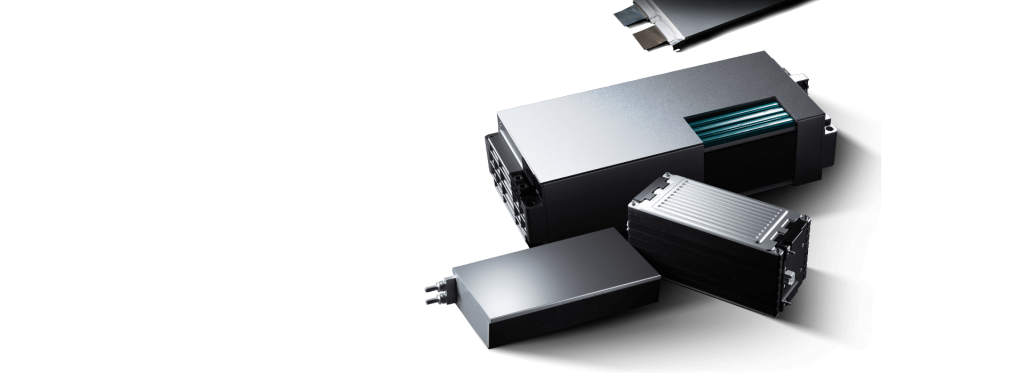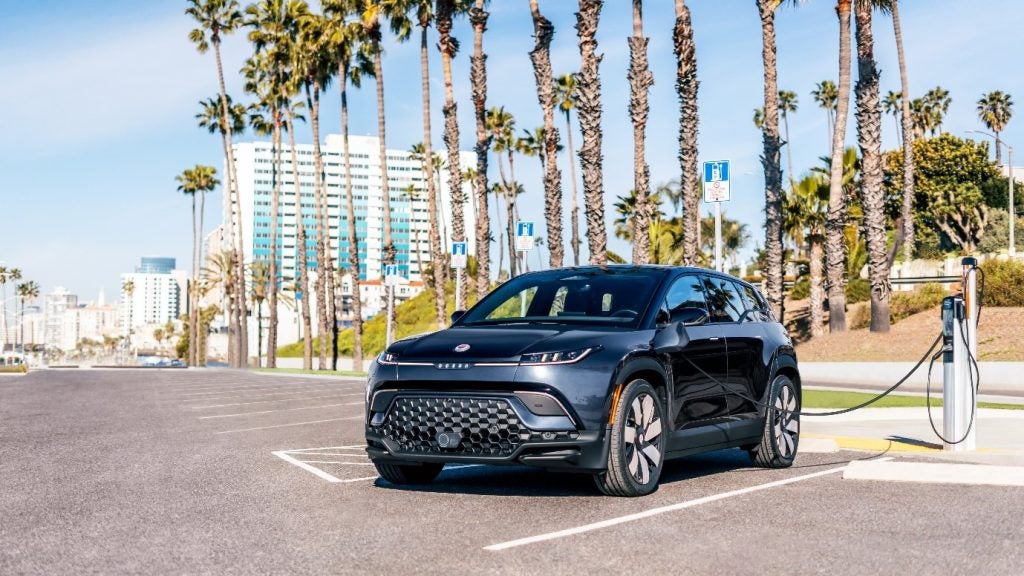
Gentex Corporation is about more than just dimmable mirror systems. It has developed an array of connected car features, digital rear vision systems, biometric-based vehicle security, in-vehicle payments with Visa, and other emerging automotive features ready for commercialisation. To find out more, we caught up with Craig L. Piersma, Director of Marketing, Gentex Corp.
There is a lot of talk about the autonomous car. In what ways can Gentex support this?
Approximately 50 percent of our revenue comes from advanced features like displays, camera systems, digital vision components, connected car features and telematic modules.
Gentex is perhaps best known for having invented the automatic-dimming mirror, which uses a combination of light sensors, chemistry and microprocessor-based algorithms to eliminate rearview mirror glare during night-time driving. For over 40 years, we've been the world's leading supplier of dimmable mirror systems. What most people don't realise is that approximately 50 per cent of our revenue comes from advanced features like displays, camera systems, digital vision components, connected car features, telematic modules, and the like. When you consider our vertical integration, core competencies and overall product portfolio, we're poised to provide some unique technology for the various levels of autonomous vehicles.
For starters, our digital vision systems, which use cameras and displays to provide comprehensive rear and side vision, are growing in popularity. These will continue to play a critical role in Level 0-4 autonomous vehicles where a driver may either be required to, or desire to, take control of the vehicle. Because our mirror-integrated displays are in a natural, head-up location, they're also an excellent locale for driving-related alerts and notifications, including those associated to the transfer of vehicle control from computer to driver.
For Level 0-5 autonomous vehicles, our connected car features will be important. For instance, our HomeLink car-to-home automation system, which use a combination of RF and wireless control to operate home automation devices (garage doors, thermostats, home lighting, security systems, smart appliances, etc.), would allow vehicle occupants to interact with their home while on the road. In addition, our Integrated Toll Module feature would automatically pay the necessary roadway tolls, and potentially provide a platform for other in-vehicle purchases.
These features could all be authenticated via our biometrics system, which uses an iris-scanning camera to identify the driver and/or vehicle occupants. Upon entering the vehicle, a glance to the iris scanner by an authorised user would allow the vehicle to operate, and then personalise setup by automatically adjusting the seat position, HVAC controls, music favourites, GPS locations, and other cabin amenities, according to user-determined presets. The biometric system would then sanction safe, secure access to a host of cloud-based, connected-vehicle services, like home automation control, tolling, in-vehicle payments, ride-sharing amenities, etc.
How well do you really know your competitors?
Access the most comprehensive Company Profiles on the market, powered by GlobalData. Save hours of research. Gain competitive edge.

Thank you!
Your download email will arrive shortly
Not ready to buy yet? Download a free sample
We are confident about the unique quality of our Company Profiles. However, we want you to make the most beneficial decision for your business, so we offer a free sample that you can download by submitting the below form
By GlobalDataAt the most recent Consumer Electronics Show (CES 2018), Gentex demonstrated many of these features on the Rinspeed SNAP, an autonomous concept vehicle that would allow users to summon a vehicle-sized "skateboard" that docks with personalised passenger "pods" to autonomously drive users to work, shopping, camping, etc. For Snap, Gentex developed a vehicle-based biometric ID module, home automation control, and more.
Whatever form the autonomous vehicle will take, it will doubtless have a number of cameras, radar and LiDAR covering every angle. What solutions does Gentex offer to help give the AV a clean design aesthetic?
Today's vehicles are increasingly being outfitted with sensors and cameras for various ADAS features. Autonomous vehicles will undoubtedly be equipped with cameras, radar, LIDAR and a host of other safety-related sensor systems. It's challenging to integrate these into a vehicle in a manner that optimises performance while maintaining a clean design aesthetic. Gentex is working on dimmable sensor shrouds that would work to conceal and optimise the operation of cameras, optical systems and the autonomous sensor farm.
Our dimming technology consists of a proprietary electrochromic gel sandwiched between glass panels that darkens or lightens in response to electricity. A low-voltage electric current is passed through conductive coatings and across the panels to induce an electrochemical reaction in the gel that causes it to darken. Removing the voltage allows the gel to return to its natural, transparent state.
If tomorrow's mobility is about shared cars, what does that mean for Gentex?
Our biometrics system is ideal for the car or ride sharing environment.
Our biometrics system is ideal for the car or ride sharing environment. For instance, when signing up for the sharing service, users could enrol their iris. Upon using one of the vehicles, an authentication scan might allow the vehicle to operate, personalise the vehicle cabin to user-determined presets, and allocate payment for vehicle usage. Incidentals like toll charges, gas, and fast food could also be easily allocated because the vehicle would know precisely who is behind the wheel or in the vehicle.
We understand that Gentex is working with Visa to make in-vehicle payments. Could you tell us a little more about the possibilities?
At CES 2018, Gentex partnered with Visa to demonstrate how in-vehicle payments could be secured via our biometric iris-scanning technology. We demonstrated a mirror-integrated iris-scanning camera that would authenticate the driver and secure in-vehicle payments for items like gas, made possible through Visa Token Service, a security technology that replaces sensitive payment card account information with a unique digital identifier to process payments without exposing actual account details. When low on fuel, the driver would be directed to a nearby gas station, where paying for the fill-up would be as easy as choosing Visa on the vehicle's touchscreen.
Gentex and Visa are continuing to work together to show ways our biometric technology and in-vehicle payments can complement one another. Visa's leadership in digital payments combined with Gentex's connected car features and in-vehicle displays can help automakers implement unique and robust in-vehicle payments solutions.
We have seen dimmable windows in aircraft yet automotive applications are still rare. What solutions does Gentex offer the auto industry and by when can we expect to see it on the road?
Gentex currently supplies the aerospace industry with electronically dimmable windows that darken on demand so passengers can control the amount of light entering the aeroplane cabin. We're also beginning to work with our automaker customers on additional uses for dimmable glass where we can transfer the aerospace passenger cabin experience to automotive. For the first time, we've begun demonstrating large-area dimmable devices for in-vehicle lighting, sunload, and privacy control. In addition, we've debuted a dimmable combiner head-up display, and, as mentioned earlier, sensor shrouds – dimmable glass panels that darken on-demand or automatically according to sensor function. Our current dimmable glass development programmes are typically intertwined with new-vehicle development cycles, so applications could be 3-7 years out.
Is it reasonable to assume that by 2030 mirrorless cars would be commonplace thanks to advances in the applications of cameras?
Mirrorless cars are certainly coming, but it's difficult to determine when and to what extent they will replace traditional mirror systems.
Digital vision systems use a combination of cameras and displays to provide comprehensive rear and/or side vision. These systems do have advantages. A camera/display system that replaces an interior rearview mirror provides a rearward field of view that is 2-3 times wider than the traditional mirror and is completely unobstructed by passengers, luggage or C/D pillars. Vehicles that use displays to replace traditional exterior mirrors potentially gain fuel efficiency improvements and weight savings.
The EU and Japan now allow mirrorless cars, but the U.S. has yet to follow suit.
But there are a number of hurdles to widespread adoption. First of all, the systems are not legal globally. The EU and Japan now allow mirrorless cars, but the U.S. has yet to follow suit.
Display-only solutions also can't "fail-safe." Poor weather conditions, extreme darkness, a broken camera or display – these would disrupt the digital view and leave the driver with absolutely no rear or side vision.
Displays also function and are visually perceived differently than mirrors. For starters, displays provide drivers with a two-dimensional image that lacks depth of field, making it challenging to judge distance when changing lanes or reversing. In addition, when using displays, drivers must continually refocus their eyes from objects outside the vehicle to the display itself. This refocusing takes some getting used to and can be difficult, especially for older drivers or those with bifocals. Our testing has also revealed that display solutions induce motion sickness in a small percentage of drivers.
When you add to the mix the increased cost of display solutions, the challenges and styling issues associated with integrating cameras and displays into the vehicle interior, and different regional field-of-view regulatory requirements, the case for total mirror replacement becomes less certain.
To address these concerns, Gentex has been developing scalable, hybrid digital vision systems, also known as camera monitoring systems.
So could you tell us a little more about your camera monitoring system (CMS) and its stage of development?
Our camera monitoring system begins with a Full Display Mirror (FDM), an intelligent rear-vision system that uses a custom camera and mirror-integrated video display to optimise a vehicle's rearward view. The system captures video from a rearward-facing camera and streams it to a unique mirror-integrated LCD that provides the driver with an unobstructed, panoramic view behind the vehicle.
The mirror offers bi-modal functionality. In mirror mode, the product functions as a standard rearview mirror, but with the flip of a lever, the mirror enters display mode, and a clear, bright, LCD display appears through the mirror's reflective surface, providing a wide, unobstructed rearward view.
Gentex's next-generation FDM features an all-new frameless design with a larger, higher-resolution display, and is accompanied by a 1.7-megapixel camera. The result is an elegantly styled, digital rearview mirror that not only improves the driver's rearward view but also contributes to the sophistication of the vehicle's interior.
The FDM is a critical component in our new camera monitoring system (CMS), which uses three cameras to provide comprehensive views of the sides and rear of the vehicle. The side-view cameras are discretely housed in reduced-sized, exterior mirrors. Their video feeds are combined with that of a roof-mounted camera and stitched together into multiple composite views that are streamed to the driver in the Full Display Mirror.
By housing the side-view cameras in downsized exterior mirrors, the entire system fails safe.
By housing the side-view cameras in downsized exterior mirrors, the entire system fails safe. Should weather conditions or system failure disrupt the digital view, drivers can still use the interior and exterior mirrors. It also supports user preference by permitting drivers to use standard mirror views, camera views, or both. The downsized mirrors also provide the automaker with significant weight savings and fuel efficiency improvements.
By using different types of flat and curved glass, combined with simple alterations to the video viewing modes, Gentex's CMS system can be tuned to meet the various regulatory field-of-view requirements around the world.
We also recently unveiled a new exterior mirror assembly that pivots (as opposed to just the glass moving) to adjust the sideward field of view. This allows for smaller, lighter exterior mirrors.







